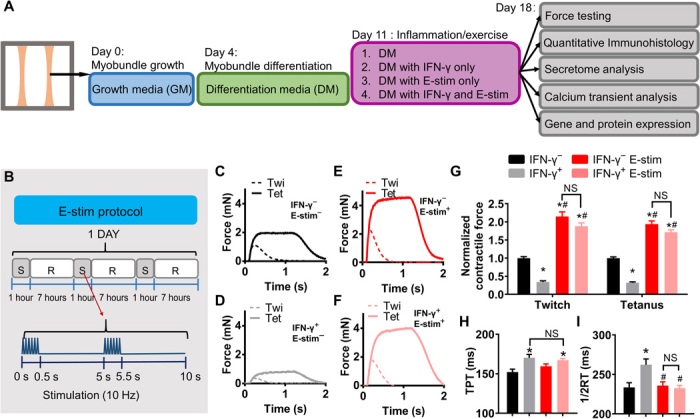Fig. 1. Exercise-mimetic electrical stimulation (E-stim) counteracts IFN-γ–induced deficit in myobundle contractile function.

(A) Schematic overview of myobundle culture, treatment, and characterization. Human primary myoblasts were expanded in 2D culture and mixed with hydrogel to form 3D myobundles, which were cultured in growth media (GM) for 4 days, then in differentiation media (DM) for 7 days, after which E-stim and/or IFN-γ (20 ng/ml) was applied for an additional 7 days. (B) E-stim protocol consisted of alternating 1-hour stimulation (S) at 10 Hz and 7-hour rest (R). (C to F) Representative twitch (Twi, 1 Hz) and tetanus (Tet, 20 Hz) force traces from myobundles (C) without IFN-γ or E-stim (IFN-γ−, E-stim−), (D) IFN-γ+, E-stim−, (E) IFN-γ−, E-stim+, and (F) IFN-γ+, E-stim+. (G) Twitch and tetanic force amplitudes averaged over three independent donors and shown relative to the IFN-γ−, E-stim− group (n = 5 to 10 myobundles per donor, 20 to 23 myobundles per group). (H and I) Time-to-peak tension (H; TPT) and half-relaxation time (I; 1/2RT) derived from contractile force recordings in myobundles (n = 47 to 75 data points from 20 to 23 myobundles from three donors per group). *P < 0.05 versus IFN-γ−, #P < 0.05 versus IFN-γ+. NS, nonsignificant. Data are presented as means ± SEM.
